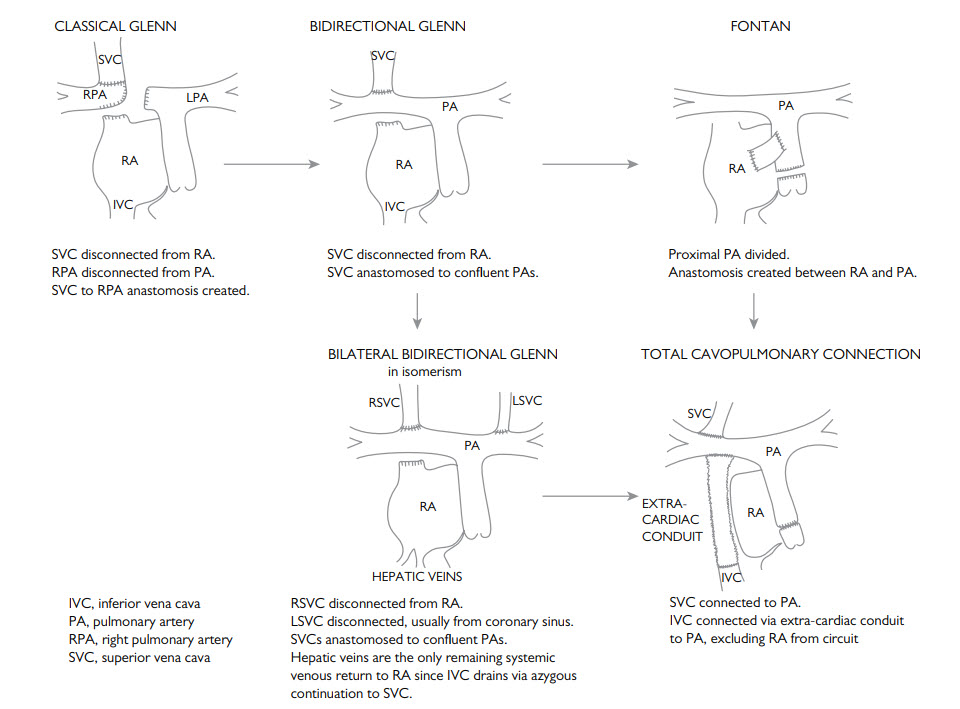Question 6#
Which one of the following statements regarding the Fontan operation is correct?
A. It is a palliative procedure in patients with congenital cyanotic heart disease when a biventricular repair is not possible; the result is univentricular physiology with diversion of systemic venous return to the pulmonary arteriesB. Patients should have a near-normal life expectancy as chronic cyanosis is corrected and the pulmonary vasculature is protected from systemic pressures
C. It is one potential solution for transposition of the great arteries; systemic venous blood is diverted to the subpulmonary ventricle via an atrial baffle and pulmonary venous return is redirected to the systemic ventricle
D. It is a corrective procedure for patients with functionally univentricular cyanotic heart disease; the end result is a biventricular repair
E. It is a palliative procedure in patients with congenital cyanotic heart disease when a biventricular repair is not possible; the result is univentricular physiology with a systemic arterial to pulmonary shunt to increase pulmonary blood flow
Correct Answer is A
Comment:
The Fontan operation is a palliative procedure in patients with complex cyanotic heart disease when a biventricular reapir is not possible. These patients have univentricular physiology with mixing of pulmonary and systemic blood in a dominant ventricle (a rudimentary ventricle is often present connected via a ‘VSD’). Life expectancy is not normal. The procedure consists of redirection of systemic venous blood to the pulmonary arteries (although there are a number of technical variations). The current modification is the total cavopulmonary connection (TCPC)

Glenn and Fontan operations. TCPC is the modern modification.
Surgery for TGA to redirect blood via baffles (atrial switch) is named either the Mustard procedure (prosthetic baffles) or the Senning procedure (intrinsic atrial tissue baffles). These approaches have been superseded by the more successful arterial switch procedure. Systemic arterial-to-pulmonary shunts (e.g. Balock–Taussig shunt) can be used in a staged approach to palliate a patient until a Fontan procedure is completed.